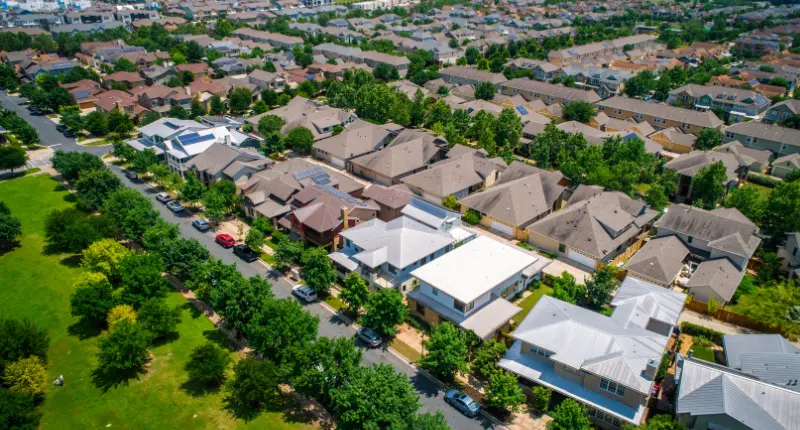- Around 19% fewer workers than expected are making the daily CBD commute
- This shift is tipped to have impacts on congestion, the labour force and beyond
- PAR Group has released new research analysing changes to commuting data from pre-pandemic levels
As a potential picture of the post-pandemic world begins to emerge around Australia, changes to commuting patterns have become evident.
According to research released by independent property research collective PAR Group, these changing commuting habits may have impacts far beyond the roads.
At the root of changing commutes is the shift to working from home (WFH) as employees and employers enjoy the benefits of an out of office status for at least part of their week.
PAR Group’s study, was conducted by Damian Stone of Y Research and Rob Ellis of the Data App.
“Across the country, approximately 19% fewer than expected office workers shunned the daily commute to their CBD office building in favour of working from home.”
Damian Stone, Y Research and Rob Ellis, Data App
“Whist this probably represents the peak in workers not going to the CBD office, working from home, even one day a week, has significant longer-term consequences from CBD property assets, as well as society at large,” they said in a joint statement released.
Change in the Number of Commuters from Pre-Pandemic Levels

The evident decline in commuting from a shift to WFH is likely to have a lasting impact on Australia’s CBD’s and beyond.
CBD markets
Retailers in the city centres could become the victims of the WFH shift.
“CBD based retailers, which rely heavily on the daily office workforce, could potentially experience a significant drop in retail spending,” Mr Stone and Mr Ellis said.
This is tipped to result in increased rates of office and retail vacancy, according to the pair.
Time
One of the biggest drawcards for employees to WFH is the extra time in their day from cutting the commute.
Before the pandemic hit, the average commute of a CBD employee would take 66 minutes according to research from Household, Income and Labour Dynamics in Australia (HILDA).
Mr Stone and Mr Ellis estimated that working one day a week from home would equate to an extra 55 hours of free time every year for the typical commuter.
“That is, 55 hours to be a more productive worker, 55 hours to achieve a better work/life balance, 55 hours to be a more engaged family member or friend or 55 hours for fitness, volunteering, hobbies etc,” said Mr Stone and Mr Ellis.

Congestion
The WFH trend may be thought to have the added benefit of less congestion in CBDs, Mr Stone and Mr Ellis suggest that the reality may be the opposite.
An interesting trend reported by the PAR Group is the shift in preference from public transport to cars in some cities.
All major capital cities have experienced a 34.7% average decline in public transport usage as lockdowns and WFH drives people away.
Car usage on the other hand has increased in Perth and Brisbane, although it fell 15.3% across the nation as a whole.
“On a broader level, the adoption of one day a week working from home is likely to lead to increased congestion, as more commuters switch from public transport to car use,” said Mr Stone and Mr Ellis.
“Monday and, to a lesser extent, Friday being the days favoured by employees working from home, increased congestion will most likely occur mid-week.”
They believe CBD car parks are likely to benefit from increased demand.

Flexibility
Having been thrown into WFH, many are now unwilling to sacrifice the newfound flexibility they gained from spending some of their working weeks in the home office.
Managed flexibility has been dubbed the office model of the future, with family life, in particular, benefiting from flexible workplaces.
“Across the globe, the great resignation is underway,” said Mr Stone and Mr Ellis.
“Employees denied working flexibility from their employer, are voting with their feet.”
This has a flow in effect to property markets as cheaper homes become attractive despite being potentially located far from the CBD.
“With the increase in remote working, employees are moving to more affordable or lifestyle residential areas,” they said.
Labour force
As the proximity of an employee to their office becomes less relevant to employers, potential workers will be competing for jobs with a wider applicant pool.
“Australian workers will increasingly be competing in a global market for labour,” said Mr Stone and Mr Ellis.








